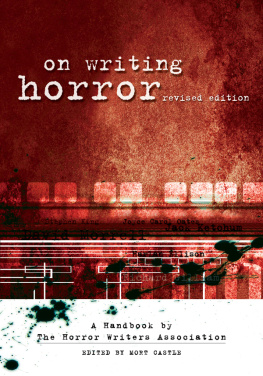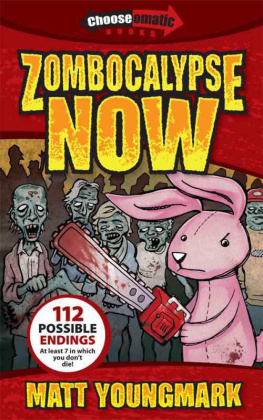Matt Glasby - The Book of Horror
Here you can read online Matt Glasby - The Book of Horror full text of the book (entire story) in english for free. Download pdf and epub, get meaning, cover and reviews about this ebook. year: 2020, publisher: White Lion Publishing, genre: Detective and thriller. Description of the work, (preface) as well as reviews are available. Best literature library LitArk.com created for fans of good reading and offers a wide selection of genres:
Romance novel
Science fiction
Adventure
Detective
Science
History
Home and family
Prose
Art
Politics
Computer
Non-fiction
Religion
Business
Children
Humor
Choose a favorite category and find really read worthwhile books. Enjoy immersion in the world of imagination, feel the emotions of the characters or learn something new for yourself, make an fascinating discovery.

- Book:The Book of Horror
- Author:
- Publisher:White Lion Publishing
- Genre:
- Year:2020
- Rating:3 / 5
- Favourites:Add to favourites
- Your mark:
- 60
- 1
- 2
- 3
- 4
- 5
The Book of Horror: summary, description and annotation
We offer to read an annotation, description, summary or preface (depends on what the author of the book "The Book of Horror" wrote himself). If you haven't found the necessary information about the book — write in the comments, we will try to find it.
The Book of Horror — read online for free the complete book (whole text) full work
Below is the text of the book, divided by pages. System saving the place of the last page read, allows you to conveniently read the book "The Book of Horror" online for free, without having to search again every time where you left off. Put a bookmark, and you can go to the page where you finished reading at any time.
Font size:
Interval:
Bookmark:
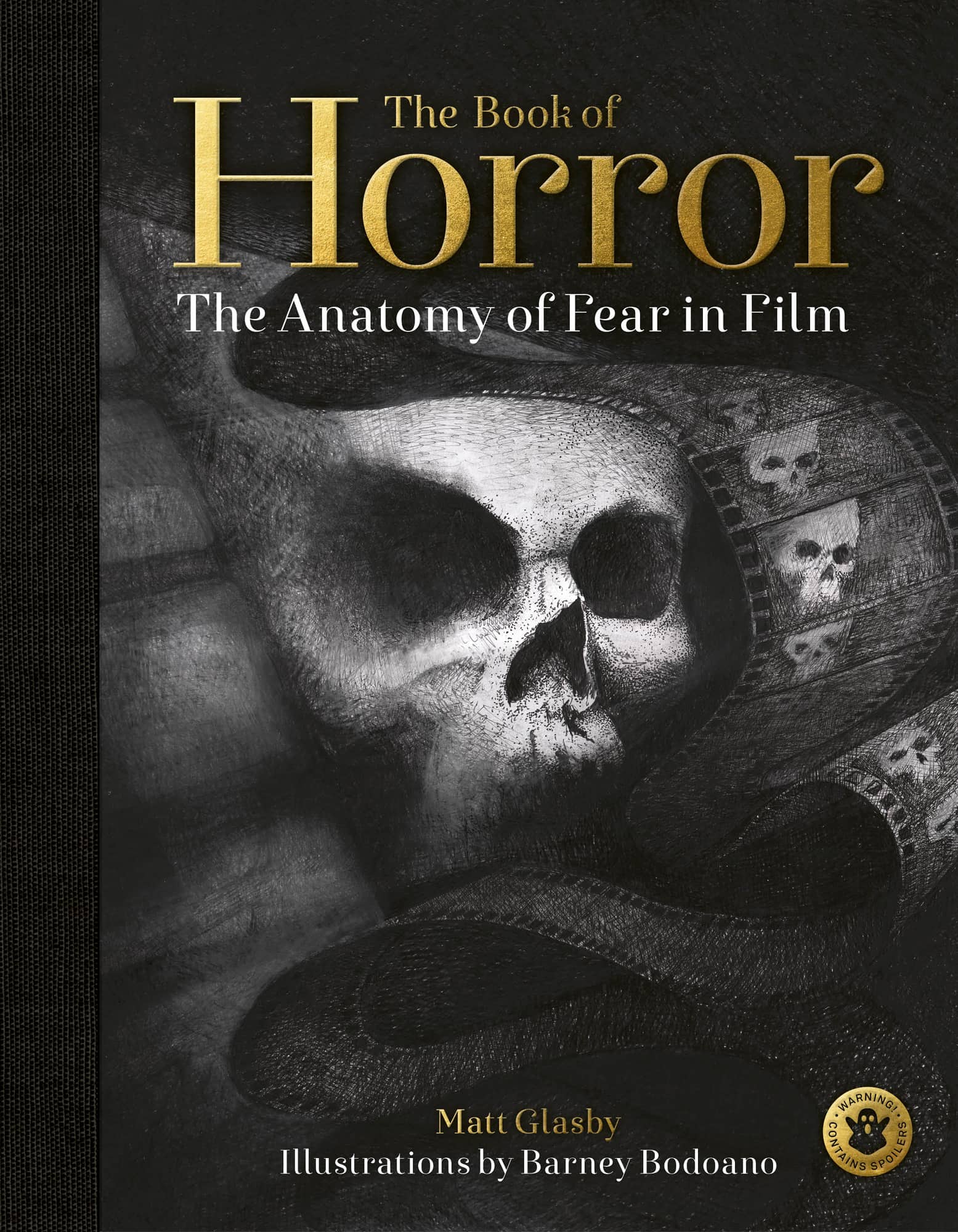

The Anatomy of Fear in Film
Matt Glasby
Illustrations by Barney Bodoano

Horror, said legendary director John Carpenter, is a reaction; its not a genre. While it is unwise to argue with the master, perhaps it is more accurate to say that horror is a genre unlike any other except comedy because it depends upon a reaction.
Horror has never really gone out of fashion because being scared never has.
Whether they deal with monsters, murderers or creeping madness, horror films are trying to scare us. As Professor Darryl Jones notes in Sleeping With the Lights On, even the word horror, derived from the Latin horrere, signifies an involuntary response: to cause our hair to stand on end, to make us tremble or shudder.
This is why what constitutes a horror film is an issue of style not subject matter. Despite centring on a supernatural being, Casper is clearly not a horror film; yet Annabelle about a toy doll most certainly is. Equally, though they contain horrifying moments, the likes of Jaws, Alien and The Silence of the Lambs do not qualify because scaring us is not their primary objective. A recent Time Out compilation of the 100 Best Horror Movies included the war film Come and See, the TV drama Threads and sci-fi efforts The Fly and The Thing which just goes to show how blurred the lines are and, more importantly, how few horror films succeed in frightening us.
With blockbusters such as It breaking box office records, and elevated horrors by Jennifer Kent (The Babadook), Jordan Peele (Get Out, US) and Robert Eggers (The Witch, The Lighthouse) winning critical plaudits, the genre has never been more popular. But horror has never really gone out of fashion because being scared never has. From silent-era classics such as Georges Mliss The House of the Devil (1896), perhaps the first ever horror film, to tech-savvy twenty-first-century efforts like Death of a Vlogger (2020), our fears remain the same, even if the ability to show them on-screen evolves at pace.
Viewed today, the Universal monster movies of the 1930s or Val Lewtons RKO B-movies of the 1940s are marvels of inference and innovation, but no longer actively frightening. For this reason, The Book of Horror concentrates on films from the post-war era. It is not a history, or a hagiography, but a sincere attempt to collate the scariest movies ever made and examine how they work.

Despite being a horror critic for nearly two decades and an obsessive fan for three, deciding on the final selection proved a daunting task. Hundreds of classic and contemporary movies were surveyed, alongside obscurities from Iceland, Indonesia and beyond, suggested by friends, colleagues and filmmakers.
Ultimately the final list contains films that are actually, tangibly scary, and remain so after multiple viewings.
Faced with seventy-five years of material to choose from, it became necessary to apply some ground rules. To be considered, entries had to be proper horror films so no TV movies, sci-fi or thrillers and still readily, legally, available. Although the book goes back as far as 1945s Dead of Night, Alfred Hitchcocks 1960 classic Psycho is the first movie discussed in detail, because it represents a watershed moment for the genre. After Psycho, nothing was off-limits in the pursuit of a good scare: no subject too transgressive, no special effect too extreme, no narrative twist too shocking. This practice continued throughout the Video Nasty era of the 1980s to the present day: the decapitation of Charlie (Milly Shapiro) in Ari Asters recent Hereditary being a harrowing example.
There was also a strict no doubles policy. Only the very best sequels (such as [Rec]2) have been included, and in the rare cases that an original film and its remake are both eligible, as with Ju-On: The Grudge, the more effective was chosen. Franchise horrors such as A Nightmare on Elm Street and Friday the 13th largely did not make the grade, because familiarity has dulled their edges. Readers will also notice the absence of great, genre-straddling auteurs such as David Cronenberg, Brian De Palma and David Lynch. Ultimately the final list contains films that are actually, tangibly scary, and remain so after multiple viewings. If that disqualifies such masterpieces as Videodrome, Carrie and Mulholland Drive, so be it.
What frightens us is, of course, subjective, but even subjective responses contain patterns worth unpicking. Tricks such as exaggerated lighting and non-linear editing are common in all forms of cinema, so instead a unique system was devised to examine seven specific techniques, or scare tactics, that horror films rely on to work their dark magic.
Throughout the book, each of the seven scare tactics is represented by its own bespoke symbol. So, for example, when you see a ticking clock like this , it means Dread. The symbols appear in the text to show that a particular scare tactic is relevant to a particular scene or aspect of the film. They are also used in a summary infographic to illustrate how much each film uses each scare tactic overall. A second infographic charts the intensity and timings of the films most frightening moments. The seven scare tactics can be broken down like this
, it means Dread. The symbols appear in the text to show that a particular scare tactic is relevant to a particular scene or aspect of the film. They are also used in a summary infographic to illustrate how much each film uses each scare tactic overall. A second infographic charts the intensity and timings of the films most frightening moments. The seven scare tactics can be broken down like this

This refers to two related aspects of cinematography: negative space and positive space. Negative space is when there is too much room around the subject of a shot. It makes us feel unsettled, like something might jump out at any moment. The expanse of curtain behind Marion Crane (Janet Leigh) in Psychos shower scene is perhaps the ultimate example. Negative space also lets us glimpse something that the characters do not, such as the masked face appearing out of the darkness in The Strangers. Positive space is when there is too little room around the subject of a shot. It allows threats to intrude suddenly into the frame, such as when Mrs Ganush (Lorna Raver) is revealed lying behind Christine (Alison Lohman) in Drag Me to Hell. Found-footage films such as The Blair Witch Project are particularly adept at manipulating dead space because the panicky camera movements switch from shaky wide shots (negative space) to extreme close-ups (positive space) without warning. Lake Mungo, meanwhile, makes more sophisticated use of it by having a ghost haunt the edges of family photographs and videos.

Font size:
Interval:
Bookmark:
Similar books «The Book of Horror»
Look at similar books to The Book of Horror. We have selected literature similar in name and meaning in the hope of providing readers with more options to find new, interesting, not yet read works.
Discussion, reviews of the book The Book of Horror and just readers' own opinions. Leave your comments, write what you think about the work, its meaning or the main characters. Specify what exactly you liked and what you didn't like, and why you think so.

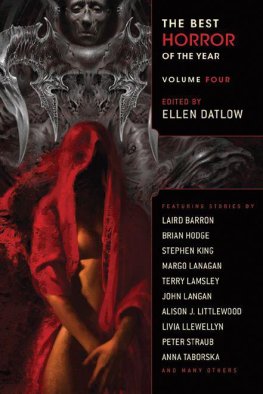
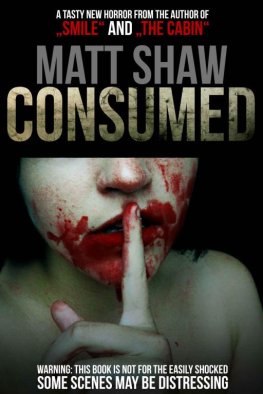
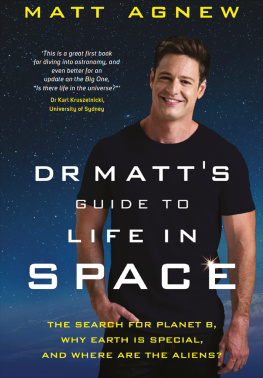
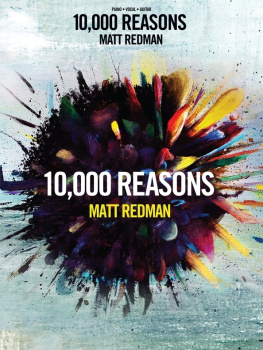
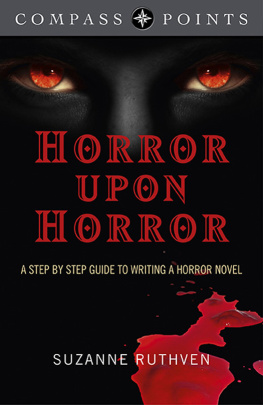


![Matt Cardin - Horror Literature Through History [2 Volumes]: An Encyclopedia of the Stories That Speak to Our Deepest Fears](/uploads/posts/book/119545/thumbs/matt-cardin-horror-literature-through-history-2.jpg)
